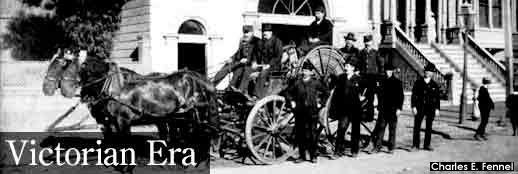Although
the same senses of urgency and excitement have been around since
the nineteenth century, much has changed in the actual firefighting
process over the years. Up until the 17th century, firefighting
consisted of bucket brigades. Two long lines of any able-bodied
citizens in the area would pass heavy buckets of water from
a fire station or from the surrounding water to the location
of the fire and empty buckets back to the source. Needless to
say, this was a very ineffective way to fight fires, as a lot
of water was lost in the transport. It was a tireless job that
tested the strength of even the strongest firefighters at the
time.
Additionally, the firefighters
were required by law to mitigate the damage done to property
by their firefighting techniques. As such, the Salvage Unit
was created. This group of firefighters would arrive on scene
alongside the rest of the firefighters with tarps, mops, buckets,
squeegees, and other equipment used to protect property from
water damage. For example, if there was a fire on the upper
floor of a building, the Salvage Unit was responsible for entering
the lower floors (assuming it was safe to do so), and cover
unharmed property with tarps.
More and more inventions arrived in
the firefighting world, each making the firefighting process
easier but the transportation more difficult. An example is
the portable water tower, which was invented to fight fires
on top floors of buildings. It was a large tank that could be
raised both manually and using gears to pour a steady stream
of water on the upper part of a burning structure. |
| 
|

|
|
 |






